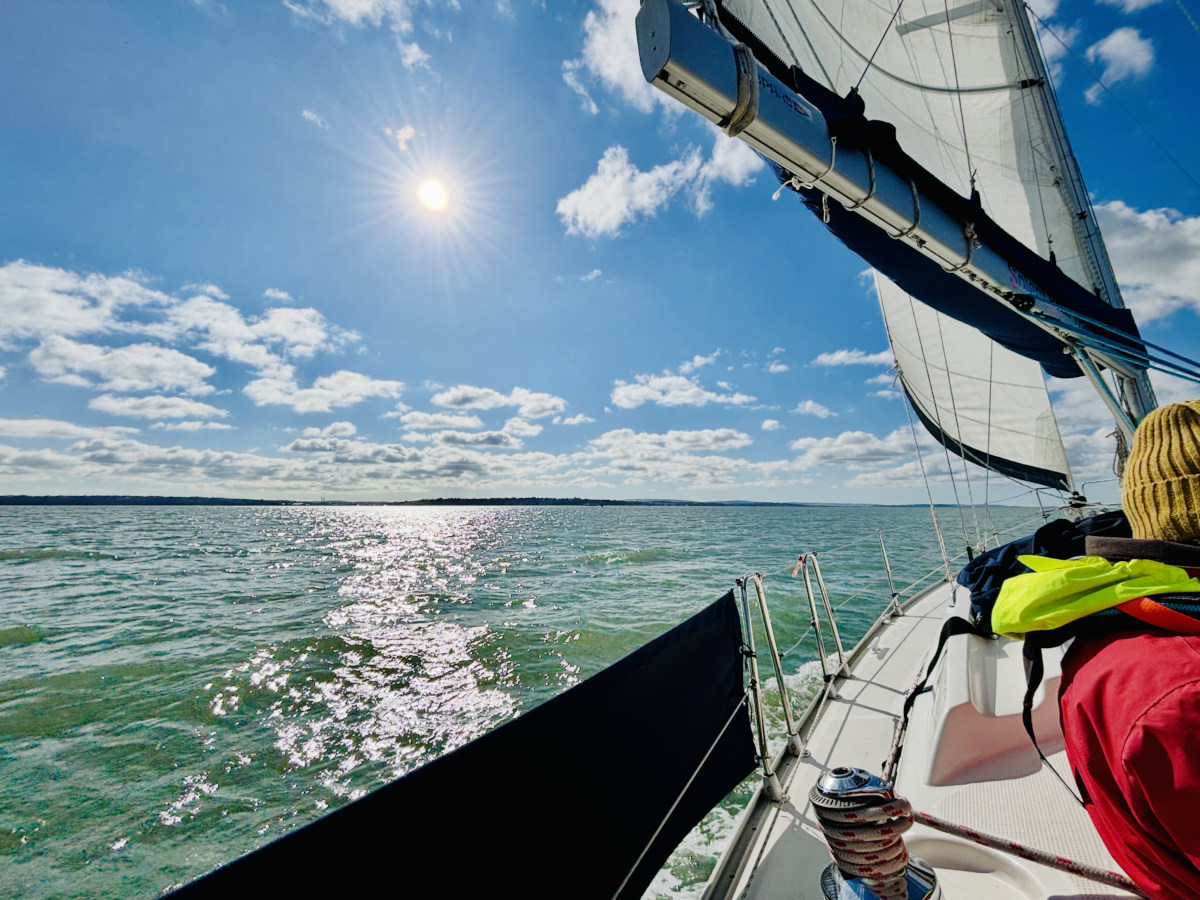Lessons in Leadership and Navigation
I recently spent a week in the Solent doing my Day Skipper Practical Sailing Course. There were four students on the boat, two undertaking the RYA Competent Crew course and another Day Skipper. Our instructor was excellent and thanks to our combined prior sailing experience she was able to push us to practice maneuvers repeatedly, ensuring we mastered every aspect of the syllabus.
I enjoyed the experience, although I was quite nervous at times, particularly when under observation. Reversing off a mooring buoy on a falling tide I very nearly got the boat stuck! It would have been safer to move the boat forwards into deeper water, and then steer away from the buoy rather than reversing into the shallows. The depth sounder briefly read zero below the keel but a burst of engine revs moved us safely back into the channel. This was a perfect example of how crucial situational awareness is when skippering, I was focused on nailing the maneuver and directing the crew and momentarily lost track of the tide and topography. I think this is something which the course makes you aware of but can really can only come with practice.
My sailing knowledge comes from a patchwork of experience sailing small dinghies and yachts as crew in different parts of the world, and so my techniques didn’t always conform to the “RYA methods”, but I got the hang of it by the end of the week. Something I particularly appreciated was the time to practice both the theory and practical aspects repeatedly until each process was completed spot-on each time.
One of the most impressive skills we learned was ferry gliding onto a pontoon—a maneuver that felt almost like magic once we got it right. The key breakthrough was developing a mental model of the forces at play—understanding how the engine’s thrust, rudder angle, and tidal stream interacted to let us move the boat sideways through the water with control. Of course, this was only possible because we had spent a lot of time perfecting our ability to maneuver astern. Reversing a boat with precision, especially in close quarters, was a skill in itself, and once we were able to do it with confidence, the ferry-glide started to click. Getting it spot-on was a real “lightbulb moment,” and it’s definitely a technique I’ll want to practice more in the future.
The Solent was an excellent training ground, and the night exercise was a real test of applying navigation theory in a complex area full of vessels and hazards. Before the course I had read Tom Cunliffe’s “The Complete Day Skipper” and one idea that stuck with me was that skippering can’t be done from the nav table alone—you have to balance leadership on deck with checking the details below. Our instructor encouraged us to think along these lines as well. At one point during the night exercise I was on deck but couldn’t identify the next buoy marking our waypoint. I trusted the crew to hold position next to a known buoy while I quickly popped below to double-check the chart and grab the hand-bearing compass. A quick check confirmed the bearing, and back on deck, I was able to confidently identify the correct buoy. This was a great lesson in skippering: what initially felt like a problem (was my navigation correct?) turned out to be a straightforward issue of verification. Sometimes, taking a moment to step away, confirm the details, and return with clarity is the best decision a skipper can make.
I’m pleased to have passed, and on reflection feel that the course helped me consolidate experience and put my theory to the test in real-world scenarios. I know I’ll approach every voyage—whether on a yacht or my own small boat—with greater confidence and skill.
